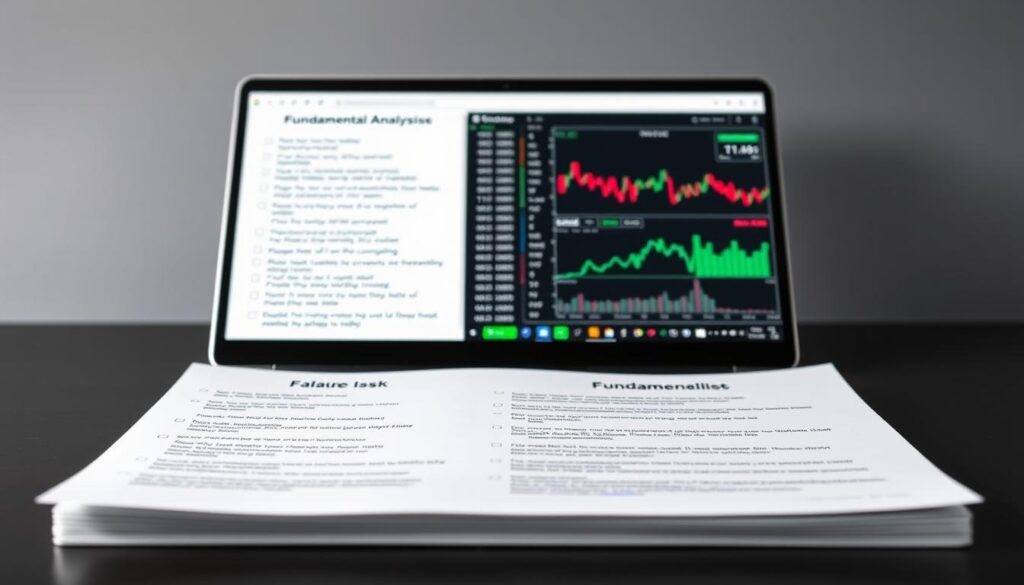Now Reading: Understanding Crypto Derivatives Market Impact on Prices
- 01
Understanding Crypto Derivatives Market Impact on Prices
Understanding Crypto Derivatives Market Impact on Prices

Financial instruments linked to digital assets have become a dominant force. These tools allow for speculation on value changes without direct ownership. Their role in today’s financial landscape is fundamental.
On the most active days, the volume of these contracts surpasses $100 billion. This figure rivals the daily activity of major traditional exchanges. The scale is immense, often exceeding standard spot trading by a factor of five.
This ecosystem does not merely reflect valuations. It actively shapes them through complex feedback loops. Understanding this relationship is essential for navigating digital asset spaces effectively.
This guide explores how various contracts create ripple effects. We will examine the intricate connection between derivative activity and spot value movements. Grasping this dynamic is crucial for traders and investors alike.
Key Takeaways
- Derivative trading volume for digital assets often dwarfs spot market activity.
- These financial instruments are a cornerstone of the modern digital asset ecosystem.
- Price discovery is heavily influenced by activity in derivatives markets.
- The scale of trading rivals that of major traditional stock exchanges.
- Understanding this relationship is no longer optional for effective participation.
Introduction to the Crypto Derivatives Landscape
Contracts tied to digital currencies represent a major development in finance. These tools let people bet on value shifts without holding the actual token. Their growth mirrors the broader maturation of virtual currency spaces.
Defining Crypto Derivatives and Their Origins
These financial products get their worth from an underlying blockchain token. Economist Robert Shiller first imagined perpetual agreements back in 1993. The idea only found real use in digital asset circles much later.
This setup means you can gain exposure to price swings. You avoid the hassle of storing or safeguarding the actual coin. This reduces operational complexity significantly.
Significance in the Evolving Digital Asset Market
What began as niche offerings are now essential infrastructure. Trading volumes for these contracts often dwarf simple buy-and-sell activity. They have become a central pillar of the entire ecosystem.
Their role in attracting institutional money is crucial. They enable sophisticated strategies once absent from this sphere. This evolution reshapes dynamics, influencing volatility and long-term value formation.
Understanding this landscape is now basic knowledge. It is key to grasping how modern digital asset spaces work structurally.
Types and Mechanisms of Crypto Derivatives
Advanced financial products built on blockchain tokens offer traders diverse ways to manage risk and exposure. These instruments provide sophisticated strategies beyond basic asset ownership.

Overview of Futures, Perpetual Contracts, Options, and Swaps
Futures contracts establish agreements to buy or sell assets at set prices on future dates. They serve both speculative and hedging purposes effectively.
Perpetual contracts dominate the landscape with 93% of all activity. These instruments have no expiration date, offering maximum flexibility for position management.
Options provide rights rather than obligations to transact. This creates asymmetric risk profiles ideal for sophisticated strategies.
Swaps facilitate cash flow exchanges between parties. They enable synthetic exposure without direct asset ownership.
Understanding Leverage and Margin Trading
Leverage allows control of larger positions with smaller capital. This mechanism amplifies both potential profits and losses significantly.
Margin requirements ensure traders maintain minimum collateral levels. Positions face automatic liquidation when thresholds breach safety limits.
Platform accessibility contrasts sharply with traditional markets. Registration requires only an email address and minimal capital for immediate trading access.
The Role of Crypto Derivatives in Price Discovery
A quiet revolution in how we find the true worth of blockchain-based tokens is underway. These advanced financial tools are now central to the price discovery process.
They aggregate information from traders worldwide, operating 24/7. This creates continuous signals that other venues reference.

Influence on Spot Market Dynamics
Research shows unregulated derivative platforms often lead movements in regulated spot exchanges. This demonstrates their high informational efficiency.
It creates a complex feedback loop. Activity in these venues both responds to and actively creates movements in underlying assets.
This relationship is essential for understanding modern valuation.
Market Stabilization and Volatility Control
The introduction of Bitcoin futures and ETFs has contributed to greater stability. These products attract institutional capital, which can dampen wild swings.
However, high leverage can also create instability cycles. Sharp moves trigger liquidations, which then cause more volatility. Successfully analyzing volatility patterns is key.
This dual nature makes their role in the ecosystem both powerful and nuanced.
Exploring the crypto derivatives market impact on prices
Empirical data reveals how advanced trading tools create ripple effects throughout the blockchain ecosystem. Research from Carnegie Mellon University’s CyLab provides compelling evidence of this relationship.
Their analysis of major exchanges demonstrates the scale of this influence. The findings offer concrete validation of theoretical models.
Empirical Data and Market Studies
CyLab’s comprehensive study of BitMEX revealed striking patterns. Trading volume for these instruments typically exceeds spot activity by five times.
Peak days see over $100 billion in activity. This rivals traditional financial venues like the NYSE.
| Research Finding | Effect Type | Significance |
|---|---|---|
| 24/7 leveraged access | Increased activity | Higher liquidity |
| Funding rate mechanisms | Higher costs | Reduced efficiency |
| Leverage and short-selling | Informed trading | Price discovery |
Real-World Examples and Regulatory Insights
China’s 2021 ban created a natural experiment. When Huobi suspended perpetual contracts, clear effects emerged.
Trading volume declined immediately. Costs fell as spreads narrowed. Sophisticated participants reduced their activity.
This case demonstrates how these instruments concentrate informed activity. Their absence creates measurable changes in ecosystem dynamics.
Risk Factors and Challenges in Crypto Derivatives Trading
Sophisticated traders must confront several significant challenges when engaging with leveraged products. These instruments magnify both opportunity and danger in equal measure. Understanding these hazards is essential for long-term success.

Managing Volatility and Leverage Risks
Digital assets naturally experience sharp price movements. Using leverage amplifies this inherent volatility dramatically. Small adverse swings can trigger complete position liquidation.
Data reveals that smaller accounts face disproportionate liquidation rates. This creates an environment where experienced participants maintain a clear advantage. Proper risk management becomes the critical differentiator.
Addressing Liquidity Concerns and Regulatory Uncertainties
Some platforms suffer from thin order books. This liquidity shortage causes significant trading slippage. Executing large orders at desired prices becomes challenging.
The regulatory framework continues to evolve across different jurisdictions. This uncertainty creates operational complications for both platforms and users. Staying informed about legal developments is crucial for navigating this landscape safely.
Benefits and Trading Strategies in Digital Asset Derivatives
The strategic application of advanced trading tools unlocks significant benefits for investors seeking to optimize their digital asset exposure. These instruments provide sophisticated approaches beyond basic ownership.

Hedging Opportunities and Speculative Advantages
Hedging strategies allow participants to protect spot holdings from adverse price movements. This creates defensive positions that reduce overall portfolio volatility.
Speculative approaches offer profit potential in both rising and falling markets. Short positions enable gains during downturns, a feature unavailable to spot-only investors.
Capital efficiency represents another key advantage. Traders gain substantial market exposure with only a fraction of the required capital.
Portfolio Optimization and Risk Management Techniques
Sophisticated investors use these tools for precise portfolio adjustments. They can express specific market views with greater accuracy.
Advanced techniques include basis trading and delta-neutral strategies. These methods capture funding rate differentials and isolate volatility exposure effectively.
| Trading Strategy | Primary Benefit | Risk Level |
|---|---|---|
| Hedging | Portfolio protection | Low |
| Basis Trading | Funding rate capture | Medium |
| Delta-Neutral | Volatility isolation | High |
| Calendar Spreads | Term structure exploitation | Medium |
These approaches enable sophisticated risk management across varying conditions. Proper implementation requires thorough understanding but offers substantial rewards.
Choosing Between Centralized and Decentralized Exchanges
Selecting the right venue for trading advanced financial instruments is a critical decision for every participant. This choice fundamentally shapes your trading experience, costs, and security posture. The two main options are centralized and decentralized platforms.
Each type offers a distinct set of advantages and trade-offs. Your priorities will determine the best fit for your strategy.
Comparative Analysis of Fees and Liquidity
Centralized platforms typically dominate in terms of liquidity. High trading volume ensures smoother order execution with minimal slippage. This is vital for large orders.
Fee structures are often highly competitive on these exchanges. They attract a wide range of participants. This creates a deep pool of liquidity for various products.
Decentralized exchanges are gaining ground. They use innovative solutions to aggregate liquidity. However, fees can be less predictable due to network congestion.
User Experience, Trust, and Security Factors
The primary trade-off involves trust and control. Centralized exchanges require you to deposit funds. This introduces counterparty risk.
In return, they offer user-friendly interfaces and robust tools. These platforms are designed for both new and professional traders. Stability during volatile periods is a key strength.
Decentralized platforms provide a non-custodial experience. You retain control of your private keys. This eliminates the risk of exchange insolvency but often comes with a steeper learning curve.
| Feature | Centralized Exchange (CEX) | Decentralized Exchange (DEX) |
|---|---|---|
| Custody | Exchange holds user funds | User holds their own funds |
| Liquidity | Typically very high | Can be fragmented |
| Fees | Clear, competitive structure | Network gas fees + protocol fees |
| Ease of Use | Generally intuitive | Often more complex |
| Regulatory Compliance | Usually licensed | Permissionless, less regulated |
Historical Evolution and Trends in Crypto Derivatives
The journey of sophisticated financial tools in the digital asset space is a story of rapid innovation and adoption. These instruments have transformed from theoretical concepts into pillars of the modern trading landscape.
This progression reflects a clear path toward maturity and institutional acceptance. Each phase introduced new capabilities for participants.
Milestones from Bitcoin Futures to Perpetual Contracts
The intellectual groundwork was laid long before Bitcoin existed. Economist Robert Shiller first proposed the concept of perpetual contracts in 1993.
Decades later, platforms like BitMEX, launched in 2014, brought these ideas to life. They popularized leveraged trading and established core mechanics.
A major breakthrough occurred with the launch of regulated Bitcoin futures on traditional exchanges. This event signaled a new level of legitimacy. It created a vital bridge to conventional finance.
The flexibility of perpetual agreements proved perfectly suited to the 24/7 digital asset world. They now command over 90% of all trading activity in this sector.
More recently, the approval of spot Bitcoin ETFs marked another significant evolution. These products offered regulated exposure, attracting fresh capital and reducing volatility.
The latest trend involves decentralized platforms. These protocols aim to replicate exchange functions without requiring users to give up control of their assets.
| Evolutionary Phase | Key Development | Significance |
|---|---|---|
| Conceptual (1993) | Shiller’s perpetual contract proposal | Intellectual foundation for future products |
| Pioneering (2014) | Launch of BitMEX | Popularized leveraged trading mechanics |
| Institutional (2017) | Regulated Bitcoin futures | Bridged digital assets with traditional finance |
| Dominance (2020s) | Rise of perpetual contracts (~93% share) | Became the dominant instrument type |
| Mainstream (2024) | Spot Bitcoin ETF approvals | Opened doors for widespread institutional capital |
Informed Trading: Insights from Perpetual Futures and Funding Mechanisms
Sophisticated traders have developed specialized strategies around the eight-hour funding cycles of perpetual futures. These contracts dominate digital asset trading with over 90% volume share.
Understanding the Eight-Hour Funding Fee Cycle
Perpetual contracts use a unique funding mechanism every eight hours. This system transfers payments between long and short positions.
The process anchors contract prices to spot values. Trading activity follows predictable U-shaped patterns within each cycle.
Research shows these patterns appear across both perpetual and spot venues. This demonstrates active market shaping rather than passive response.
Strategies for Leveraging Advanced Trading Tools
Experienced participants time entries around funding periods. They minimize costs while maximizing efficiency.
Basis trading captures funding rate premiums. Delta-neutral positions isolate income from directional exposure.
Cross-exchange arbitrage exploits rate differentials between platforms. These approaches require specialized order types and risk management.
| Advanced Strategy | Primary Objective | Risk Level |
|---|---|---|
| Basis Trading | Funding rate capture | Medium |
| Delta-Neutral | Income isolation | High |
| Cross-Exchange Arbitrage | Rate differential exploitation | High |
Understanding perpetual futures contracts is essential for modern portfolio management. Even indirect investors may encounter these instruments through financial advisors.
Conclusion
What began as experimental financial products has evolved into essential infrastructure that now drives the majority of trading volume in digital assets. This comprehensive guide has demonstrated how these sophisticated tools fundamentally shape valuation through multiple documented mechanisms.
The dual nature of these instruments creates both unprecedented opportunities and significant challenges. They enhance efficiency through improved price discovery while introducing volatility through leverage effects. Understanding this balance is crucial for all participants.
As the ecosystem continues to mature, knowledge of these advanced trading strategies transitions from specialized expertise to essential financial literacy. The evolution will bring further institutional adoption and regulatory clarity.
Mastering this landscape equips investors to navigate both current conditions and future developments effectively. The transformative power of these financial instruments will continue shaping digital asset valuation for years to come.
FAQ
How do digital asset derivatives influence the price of the underlying asset?
These financial instruments play a crucial role in price discovery. By allowing traders to speculate on future prices, they provide valuable signals about market sentiment. High trading volumes on platforms like CME Group can lead the spot market, influencing the valuation of assets like Bitcoin and Ethereum.
What are the main risks associated with trading these products?
The primary risks include the use of leverage, which can amplify losses, and high volatility. Other challenges involve liquidity concerns on some platforms and evolving regulations. It’s vital to understand margin requirements and employ sound risk management strategies.
What is the difference between a futures contract and a perpetual swap?
A futures contract has a set expiration date in the future when the trade is settled. A perpetual swap, popular on exchanges like Binance and FTX, has no expiration. Instead, it uses a funding fee mechanism, typically paid every eight hours, to keep its price anchored to the spot index.
Can derivatives be used to protect my portfolio?
Absolutely. Hedging is a fundamental use case. For example, an investor holding Bitcoin can buy a put option to gain downside protection. This strategy helps manage exposure and mitigate potential losses during market downturns, optimizing overall portfolio risk.
Are decentralized exchanges (DEXs) a viable option for derivatives trading?
DEXs like dYdX offer non-custodial trading, meaning you control your funds. However, they often have lower liquidity and higher fees compared to major centralized exchanges like Kraken. The choice depends on your priorities between capital security, order book depth, and transaction costs.
How has the ecosystem for these products evolved?
The market has grown significantly since the launch of the first Bitcoin futures on the CME in 2017. We’ve seen the rise of perpetual contracts, sophisticated options, and the potential approval of spot Bitcoin ETFs. This evolution has increased market efficiency and provided more tools for participants.
What should I look for when choosing a trading platform?
Key factors include security track record, liquidity depth, fee structure, and available order types. Assess the platform’s regulatory standing and the advanced trading tools it offers, such as charting packages and risk management features, to ensure it meets your strategic needs.














